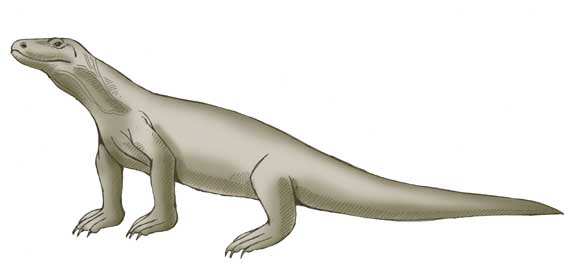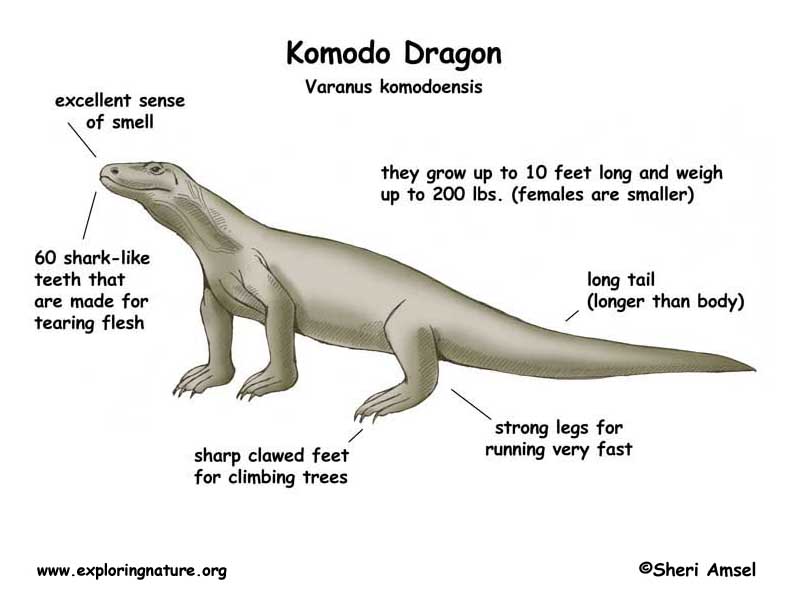

They are found on small, lonely islands in Indonesia.
They live on hot, dry, barren, steep-sloped volcanic islands. They stay in the low, dry forests and grassy areas on the islands.
Komodo dragons are the world's heaviest lizards. They grow up to 10 feet long and weigh up to 200 lbs. Females are smaller. They find food by smell. If the wind is blowing in the right direction, a komodo dragon can find dead meat (carrion) 5 miles away. They can move very fast. They can also climb trees and swim. They have about 60 shark-like teeth that are made for tearing flesh. Their mouth is full of bacteria and animals that survive a dragon attack usually die of an infection later. Baby dragons live up in trees, safe from predators.
They live alone, except during the breeding season. Males are territorial. They keep burrows and rest in them if it is too cold. They can swim to other islands nearby. They can live up to 40 years.
They eat meat (carnivorous) and even other komodo dragons (cannibalistic). They kill big prey like pigs and deer, and have been known to attack injured humans. Baby dragons eat insects, birds, eggs, small mammals and other reptiles.
The only real threat to the Komodo dragon (besides for man) is when the volcanoes erupt. They can escape injury into the water, but they lose all their prey and then starve.
Females lay up to 30 eggs in a nest mound. Newly hatched babies are more than a foot long.
Kingdom: Animalia
Phylum: Chordata
Subphylum: Vertebrata
Class: Reptilia
Order: Squamata
Suborder: Autarchoglossa
Family: Varanidae
Genus: Varanus
Species: V. komodoensis
When you research information you must cite the reference. Citing for websites is different from citing from books, magazines and periodicals. The style of citing shown here is from the MLA Style Citations (Modern Language Association).
When citing a WEBSITE the general format is as follows.
Author Last Name, First Name(s). "Title: Subtitle of Part of Web Page, if appropriate." Title: Subtitle: Section of Page if appropriate. Sponsoring/Publishing Agency, If Given. Additional significant descriptive information. Date of Electronic Publication or other Date, such as Last Updated. Day Month Year of access < URL >.
Amsel, Sheri. "Komodo Dragon" Exploring Nature Educational Resource ©2005-2024. December 14, 2024
< http://exploringnature.org/db/view/509 >

